Filter by
You must be a CTBUH Member to view this resource.
Tencent Seafront Tower 2
Tencent Coastal Tower 2, Tencent Binhai Tower 2
Building
Completed, 2017
office
composite
194.8 m / 639 ft
38
4
930
74
You must be a CTBUH Member to view this resource.
You must be a CTBUH Member to view this resource.
Proposed
Construction Start
Completed
Usually involved in the front end design, with a "typical" condition being that of a leadership role through either Schematic Design or Design Development, and then a monitoring role through the CD and CA phases.
The Design Engineer is usually involved in the front end design, typically taking the leadership role in the Schematic Design and Design Development, and then a monitoring role through the CD and CA phases.
Other Consultant refers to other organizations which provided significant consultation services for a building project (e.g. wind consultants, environmental consultants, fire and life safety consultants, etc).
These are firms that consult on the design of a building's façade. May often be referred to as "Cladding," "Envelope," "Exterior Wall," or "Curtain Wall" Consultant, however, for consistency CTBUH uses the term "Façade Consultant" exclusively.
Material Supplier refers to organizations which supplied significant systems/materials for a building project (e.g. elevator suppliers, facade suppliers, etc).
You must be a CTBUH Member to view this resource.
Usually involved in the front end design, with a "typical" condition being that of a leadership role through either Schematic Design or Design Development, and then a monitoring role through the CD and CA phases.
The Design Engineer is usually involved in the front end design, typically taking the leadership role in the Schematic Design and Design Development, and then a monitoring role through the CD and CA phases.
The Design Engineer is usually involved in the front end design, typically taking the leadership role in the Schematic Design and Design Development, and then a monitoring role through the CD and CA phases.
The main contractor is the supervisory contractor of all construction work on a project, management of sub-contractors and vendors, etc. May be referred to as "Construction Manager," however, for consistency CTBUH uses the term "Main Contractor" exclusively.
Other Consultant refers to other organizations which provided significant consultation services for a building project (e.g. wind consultants, environmental consultants, fire and life safety consultants, etc).
These are firms that consult on the design of a building's façade. May often be referred to as "Cladding," "Envelope," "Exterior Wall," or "Curtain Wall" Consultant, however, for consistency CTBUH uses the term "Façade Consultant" exclusively.
Material Supplier refers to organizations which supplied significant systems/materials for a building project (e.g. elevator suppliers, facade suppliers, etc).
CTBUH Releases Journal 2018 Issue II
26 April 2018 - CTBUH News

18 October 2016 | Shenzhen
CTBUH Video Interview – Jonathan Ward
Jonathan Ward of NBBJ is interviewed by Chris Bentley during the 2016 CTBUH China Conference. Johnathan discusses the design process behind the Tencent Seafront Towers...

30 April 2018
Taking the Corporate Campus Vertical
Jonathan Ward, NBBJ; Jiemin Ding, TJAD; Tim Etherington, Gensler
The Tencent Seafront Towers bring a novel concept – the “vertical campus” – to Shenzhen. In housing the corporate headquarters of the fourth-largest internet company...
Established as a corporate headquarters, the design process began by adapting the concept of a suburban corporate campus for a vertical urban setting. Rather than the typical process of placing all of the company space is one tower, the plan incorporates two towers connected at three different locations allowing for an easy flow through the work spaces while providing for the accommodations of an additional 12,000 employees anticipated through future growth.
The total space the company was seeking was split into two pieces, with the orientation of the towers maximizing passive energy efficiency in the hot and humid climate of southern China. Through a slight rotation of the towers and staggering of the heights to maximize shading, energy consumption was reduced by 30 percent compared to a typical office tower. In addition to the reduction of solar heat gain and glare, the placement of the towers also maximized use of the prevailing winds to naturally ventilate multiple atriums spread throughout the towers. A modular system of fins covers the façades with an optimal orientation to filter sunlight from each direction. Additional strategies then reduce energy consumption an additional 10 percent.
The company wanted to include a number of public features and employee amenities into their vertical campus and these elements were then placed within the multi-story connections linking the towers, not only improving circulation within the structures, but also serving as meeting places which bring the employees together. The first connection is located at ground level, forming a podium base designed around a cultural theme includes public spaces such as an exposition hall and a company museum beside employee dining facilities. The second connection is a multi-story bridge designed as a health and fitness center while the third and uppermost connection features a bridge with a knowledge theme incorporating meeting rooms along with a company university and library.
The connections between the staggered towers enhance the uniqueness of the design and assists in making this corporate headquarters an easily identifiable feature on the cityscape of western Shenzhen.

18 October 2016 | Shenzhen
CTBUH Video Interview – Jonathan Ward
Jonathan Ward of NBBJ is interviewed by Chris Bentley during the 2016 CTBUH China Conference. Johnathan discusses the design process behind the Tencent Seafront Towers...
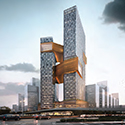
18 October 2016 | Shenzhen
The Impact of Tech Companies in Rethinking the High-Rise Workplace
While tech companies have traditionally located in suburbia due to lower property costs and the perceived security of intellectual property, they are now increasingly investing...

17 October 2016 | Shenzhen
CTBUH Video Interview – Chao (Ivan) Wan
Chao (Ivan) Wan of Tencent Holdings Limited is interviewed by Chris Bentley during the 2016 CTBUH China Conference. Ivan discusses the design process for Tencent...

16 October 2016 | Shenzhen
CTBUH Video Interview – Moira Moser
Moira Moser of M Moser Associates is interviewed by Chris Bentley during the 2016 CTBUH China Conference. Moira discusses the planning of modern work spaces...
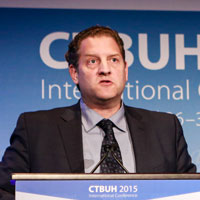
26 October 2015 | Shenzhen
How New Generations, Industries and Workplace Paradigms Are Redefining the Commercial High-Rise
This presentation will provide a data-driven analysis of building performance from three eras: the early 1900s, mid-twentieth century, and today. This longitudinal analysis will illustrate...

20 September 2012 | Shenzhen
The Synergy Tower: A New Typology for a Sustainable Future
As the pressures of global urbanization and climate change continue to grow, dense high-rise development is increasingly viewed as a key tool for forging a...

30 April 2018
Taking the Corporate Campus Vertical
The Tencent Seafront Towers bring a novel concept – the “vertical campus” – to Shenzhen. In housing the corporate headquarters of the fourth-largest internet company...

01 March 2018
Designing the High-Rise Building from the Inside/Out
For over 100 years, the tall building has largely advanced in technological innovation; however very little has been done in the terms of understanding the...
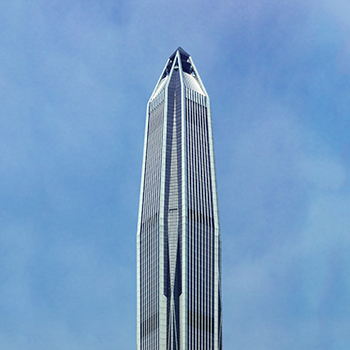
17 October 2016
Cities to Megacities: Perspectives
The CTBUH 2016 International Conference is being held in the three cities of the Pearl River Delta, the world’s largest “megacity,” projected to have 120...
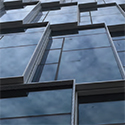
17 October 2016
Tencent Seafront Tower – A Case Study on Façade Engineering as Functional Patterns
A methodology that façade engineers commonly use to understand and detail a façade element is to break it down into “functional patterns” – principles that...
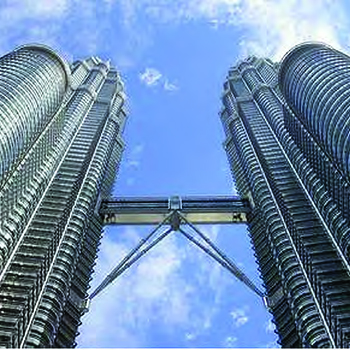
17 October 2016
Tencent Seafront Tower: Practice on Binding Buildings
This paper compares the differences between a binding building and a link building, defining the concept of a “Binding Building.” It analyzes the architectural and...
Subscribe below to receive periodic updates from CTBUH on the latest Tall Building and Urban news and CTBUH initiatives, including our monthly newsletter. Fields with a red asterisk (*) next to them are required.
View our privacy policy